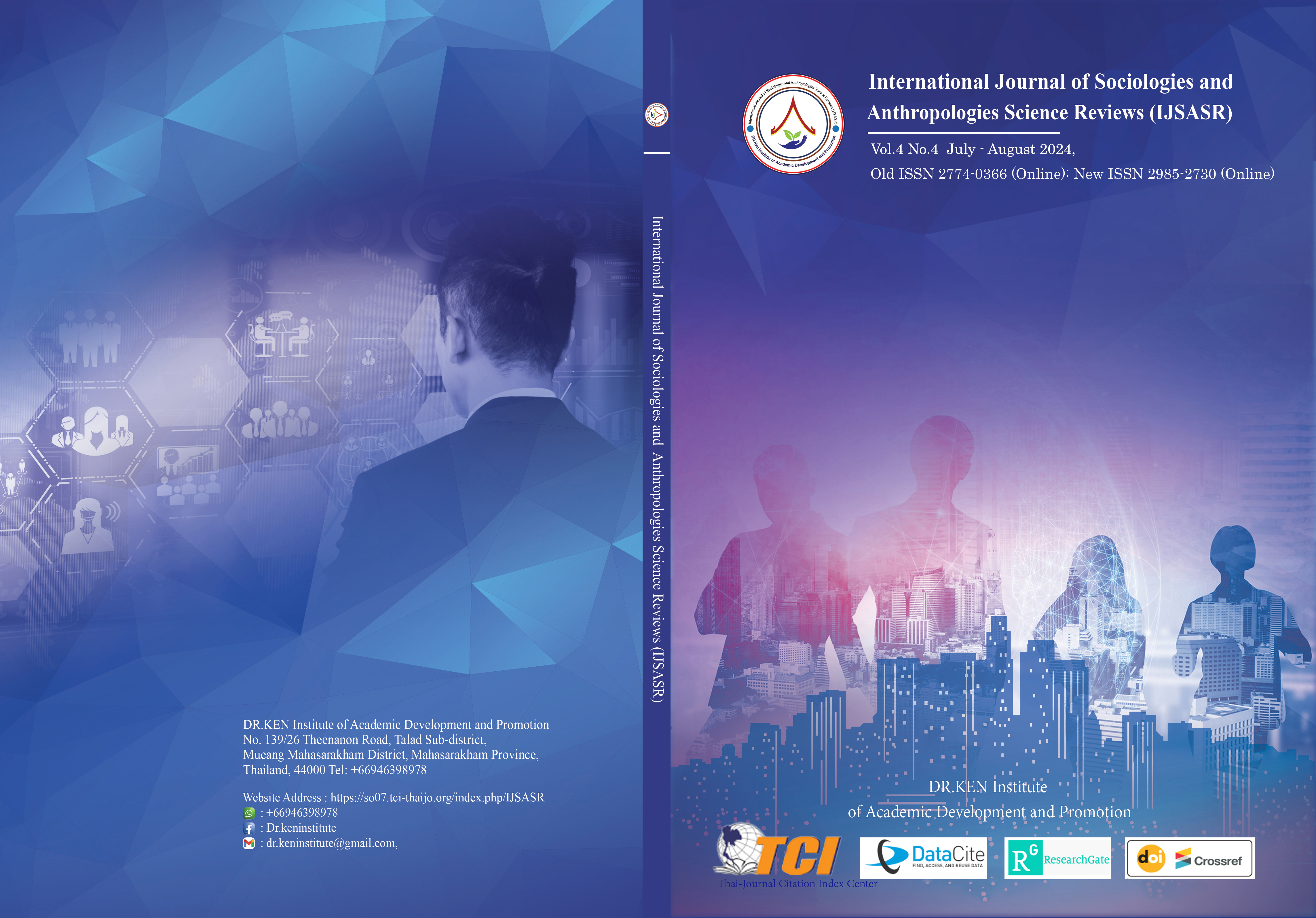Relationship Between Vocabulary Size and TOEIC Reading Achievement Among Undergraduate Students
Main Article Content
Abstract
Background and Aim: This study investigated the potential correlation between vocabulary knowledge, as measured by the updated Vocabulary Levels Test (Webb, Sasao & Ballance, 2017), and performance across three distinct sections of the TOEIC reading part—namely, incomplete sentence, text completion, and reading comprehension.
Materials and Methods: A total of 88 undergraduate students participated in the study, and their scores underwent analysis through Pearson Correlation and Standard Multiple Regression tests.
Results: The findings indicated a significant correlation between performance in two TOEIC test components (incomplete sentence and reading comprehension) and overall proficiency as measured by the updated Vocabulary Levels Test.
Conclusion: Based on the findings, the vocabulary knowledge assessed by the updated Vocabulary Levels Test serves as a robust and meaningful predictor for incomplete sentence and reading comprehension types in the TOEIC test.
Article Details

This work is licensed under a Creative Commons Attribution-NonCommercial-NoDerivatives 4.0 International License.
Copyright on any article in the International Journal of Sociologies and Anthropologies Science Reviews is retained by the author(s) under the under the Creative Commons Attribution-NonCommercial-NoDerivatives 4.0 International License. Permission to use text, content, images, etc. of publication. Any user to read, download, copy, distribute, print, search, or link to the full texts of articles, crawl them for indexing, pass them as data to software, or use them for any other lawful purpose. But do not use it for commercial use or with the intent to benefit any business.

References
Akabrian, I. (2010). The relationship between vocabulary size and depth for ESP/EAP learners. System, 38, 391-401.
Alavi, S.M., & Akbarian, I. (2012). The role of vocabulary size in predicting performance on TOEFL reading item types. System, 40, 376-385.
Chujo, K., & Oghigian, K. (2009). How many words do you need to know to understand TOEIC, TOEFL & EIKEN? An examination of text coverage and high-frequency vocabulary. The Journal of Asia TEFL, 6(2), 121–148.
Council of Europe (2001). Common European Framework of Reference for Languages: Learning, teaching, assessment. Cambridge: Cambridge University Press.
Educational Testing Service (ETS). (2015). ETS guidelines for fair tests and communications. Princeton, NJ: Educational Testing Service.
Hazenberg, S., & Hulstijn, J. (1996) Defining a minimal receptive second language vocabulary for non-native university students: an empirical investigation. Applied Linguistics, 17, 145-163.
Henriksen, B., Albrechtsen, D., & Haastrup, K., (2004). The relationship between vocabulary size and reading comprehension in the L2. Angles on the English-Speaking World, 4, 129- 140.
Hu, M., & Nation, I.S.P., (2000). Unknown vocabulary density and reading comprehension. Reading in a Foreign Language, 13, 403-430.
Laufer, B. (1992a). How much lexis is necessary for reading comprehension? In: Arnaud, P., Benoit, H. (Eds.), Vocabulary and Applied Linguistics. Macmillan, London.
Laufer, B. (1992b). Reading in a foreign language: how does L2 lexical knowledge interact with the reader’s general academic ability? Journal of Research in Reading, 15(2), 95-103.
Laufer, B. (1997). The lexical plight in second language reading: Words you don’t know, words you think you know, and words you can’t guess. In J. Coady, & T. Huckin (Eds.), Second language vocabulary acquisition (pp. 20-34). Cambridge: Cambridge University Press.
Li, M., & Kirby, J.R. (2014). The effects of vocabulary breadth and depth on English reading. Applied Linguistics, 36 (5), 611-634.
Mackey, A., & Gass, A. M. (2016). Second language research: Methodology and design. Abingdon, Oxon: Routledge.
Nation, I.S.P. (1990). Teaching and learning vocabulary. New York: Newbury House.
Nation, P. & Maera, P. (2002). Vocabulary. In N. Schmitt (ed.), an Introduction to Applied Linguistics, 35-54. London: Arnold.
Qian, D.D. (1999). Assessing the roles of depth and breadth of vocabulary knowledge in reading comprehension. The Canadian Modern Language Review, 56, 282-307.
Qian, D.D. (2002). Investigating the relationship between vocabulary knowledge and academic reading performance: an assessment perspective. Language Learning, 52, 513-536.
Schmitt, N., Jiang, X., & Grabe, W., (2011). The percentage of words known in a text and reading comprehension. The Modern Language Journal, 95, 26-43.
Staehr, L.S. (2008). Vocabulary size and the skills of listening, reading, and writing. Language Learning Journal, 36, 139-152.
Webb, S., & Paribakht, T.S. (2015). What is the relationship between the lexical profile of test items and performance on a standardized English proficiency test? English for Specific Purposes, 38, 34-43.
Webb, S., Sasao, Y., & Ballance, O. (2017). The updated Vocabulary Levels Test: Developing and validating two new forms of the VLT. International Journal of Applied Linguistics, 168(1), 34-70.
Zhang, L.J., Anual, S.B., (2008). The role of vocabulary in reading comprehension: The case of secondary school students learning English in Singapore. RELC Journal, 39, 51-76.






